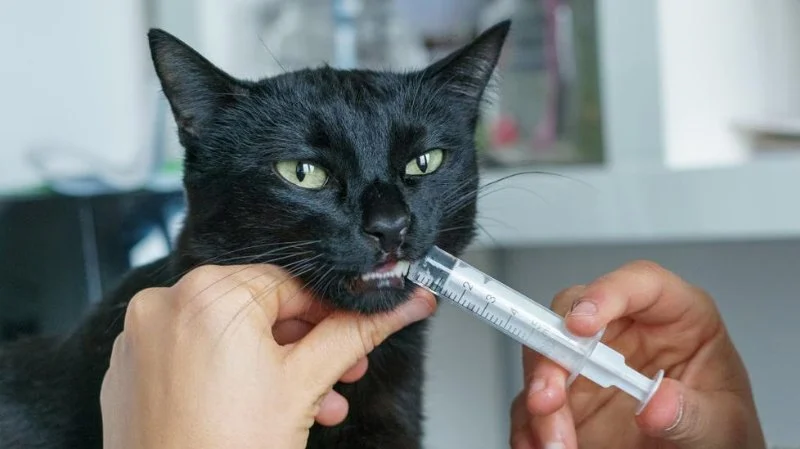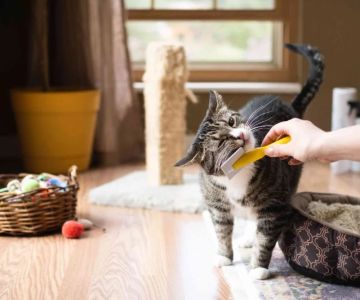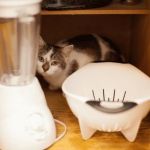
The Best Ways to Administer Liquid Medicine to a Cat
- 1. Understanding Liquid Medicine for Cats
- 2. Preparing for the Medication Session
- 3. Step-by-Step Guide to Administering Liquid Medicine
- 4. Troubleshooting Tips for Difficult Cats
- 5. Useful Tools to Make the Process Easier
1. Understanding Liquid Medicine for Cats
Administering liquid medication to a cat can be a daunting task for many pet owners, but it's an essential part of ensuring your cat's health when they are ill. Liquid medicine is often prescribed for various reasons, such as for treating infections, pain relief, or even as a supplement for cats with certain medical conditions. Unlike pills, liquid medicine is easier to dose and can be absorbed faster by your pet’s system.
Before starting the process, it’s important to understand the type of medication prescribed, its dosage, and any potential side effects. Speak to your vet if you have any questions about the medication’s usage or if your cat has any specific health concerns that might require special attention during medication administration.
2. Preparing for the Medication Session
Preparation is key when it comes to giving liquid medicine to your cat. Being prepared will not only make the process easier for you but will also reduce stress for your cat. Here are the essential steps to follow:
Choose the Right Location
Select a quiet, safe space where you and your cat can both feel comfortable. A place where there are fewer distractions is ideal, as it will help keep your cat calm and focused. Consider a small, enclosed area like a bathroom or laundry room where you can easily manage the situation.
Gather Your Supplies
Ensure that you have everything you need within arm’s reach before you start the process. This includes the liquid medication, a syringe or dropper, a towel (for wrapping your cat if needed), and some treats for rewarding your cat afterward.
Stay Calm and Confident
Cats are very sensitive to their owner’s emotions. If you’re feeling anxious or stressed, your cat will likely pick up on it. Speak to your cat in a soothing voice, and take slow, deliberate actions to avoid startling them.
3. Step-by-Step Guide to Administering Liquid Medicine
Now that you’re ready, follow these simple steps to safely and effectively give liquid medicine to your cat:
Step 1: Hold Your Cat Securely
Gently but firmly hold your cat, making sure they feel supported. Wrapping your cat in a towel can help limit movement, especially if they’re squirming. Be careful not to restrict their breathing. Make sure your cat is facing forward with their head slightly tilted up.
Step 2: Administer the Medicine
Using a syringe or dropper, place the tip into the side of your cat’s mouth, between the cheek and teeth. Slowly squeeze the medicine into their mouth. Allow your cat to swallow by gently rubbing their throat or massaging their neck. Be careful not to squirt too quickly, as this could cause choking.
Step 3: Reward Your Cat
After giving the medicine, immediately offer a treat or some petting as a reward for their cooperation. Positive reinforcement helps build a better association with the process for future doses.
4. Troubleshooting Tips for Difficult Cats
Sometimes, even with the best preparation, your cat may resist taking liquid medicine. Here are some tips for handling tricky situations:
Use a Gentle Approach
If your cat is particularly difficult, avoid forcefully restraining them. Instead, try offering a treat or some food to distract them. You can also try offering the liquid medicine mixed with a small amount of food they like. Ensure you’re still able to administer the full dosage.
Try a Different Delivery Method
If your cat refuses to take liquid medicine from a syringe or dropper, ask your vet if there’s an alternative delivery method. Some liquid medications can be flavored, or there may be options to administer them in pill form or as an injection.
5. Useful Tools to Make the Process Easier
There are several tools available to make giving liquid medicine to your cat easier and less stressful. Here are a few options:
Medication Syringes
Medication syringes are a popular and effective tool for administering liquid medicine to cats. They allow you to measure the exact dose of the medication and are designed to be easy to use and accurate.
Pet Pill Pockets or Medicine Treats
Some companies make special treats designed to hide liquid medicine inside them. These “pill pockets” or “medicine treats” can help disguise the taste and make the process smoother, though not all cats will accept them.
Cat Muzzles
For cats who are particularly squirmy or aggressive when receiving medication, a cat muzzle can help prevent biting or scratching. This should only be used as a last resort and under guidance from your vet.
Administering liquid medicine to a cat may take some patience, but with the right approach and tools, it can be done with minimal stress. Remember to always consult your vet if you're uncertain about how to give your cat their medicine, and they can provide you with additional tips tailored to your cat’s specific needs.









 Hollywood Feed4.0 (184 reviews)
Hollywood Feed4.0 (184 reviews) Brew Biscuits5.0 (2 reviews)
Brew Biscuits5.0 (2 reviews) All Friends Animal Hospital4.0 (446 reviews)
All Friends Animal Hospital4.0 (446 reviews) Kittylandkittens LLC0.0 (0 reviews)
Kittylandkittens LLC0.0 (0 reviews) Village Animal Clinic4.0 (212 reviews)
Village Animal Clinic4.0 (212 reviews) Rift Lake Aquatics4.0 (165 reviews)
Rift Lake Aquatics4.0 (165 reviews) Understanding Pet Insurance: What Does It Actually Cover?
Understanding Pet Insurance: What Does It Actually Cover? How to Keep Your Kitten's Eyes Clean and Free of Discharge
How to Keep Your Kitten's Eyes Clean and Free of Discharge The Truth About Heartworm Disease: Prevention is Cheaper Than Cure
The Truth About Heartworm Disease: Prevention is Cheaper Than Cure Why Is My Kitten's Belly Button Showing? | Omnia Pet
Why Is My Kitten's Belly Button Showing? | Omnia Pet Why Does My Cat Bite Me Gently? Love Bites Explained
Why Does My Cat Bite Me Gently? Love Bites Explained How to Stop Your Kitten from Getting into Cabinets
How to Stop Your Kitten from Getting into Cabinets